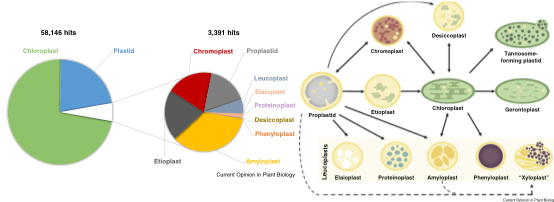Research Features
Forest trees are an important source of renewable biomaterials from wood, predominantly consisting of cellulosic and phenolic biopolymers in the secondary cell walls of xylem fibre cells. In plastids, the shikimate pathway produces aromatic amino acids that are the precursors for monolignol biosynthesis, representing a key metabolic flux point between cellulosic and phenolic biopolymer synthesis. Given the importance of plastids in wood formation, and the dearth of information regarding the biology and genetic regulation of plastids in tissues other than leaves, fruits, and roots, Desre Pinard and Dr Eshchar Mizrachi have published a review highlighting the need to study the biology of plastids in wood formation.
The article “Unsung and understudied: plastids involved in secondary growth” published in Current Opinions in Plant Biology argues for a renewed interest in plastid biology beyond chloroplasts, especially in wood formation. Populus tremula developmental series transcriptomics show that plastid targeted genes are co-regulated with the major developmental phases of xylogenesis, not just phenylpropanoid metabolism. The authors motivate from limited and low-resolution previous work in plastid biology in xylem, and the more recent discoveries of phenolic metabolising plastids in vanilla pods, that developing xylem plastids may be classified as a unique type of plastid, which they suggest be termed the “xyloplast”.
Hopefully the opinion piece will encourage tree researchers to take the unique aspects of plastid metabolism, genetic regulation, and integration with the nuclear and mitochondrial genomes into account.


